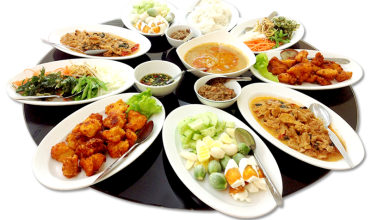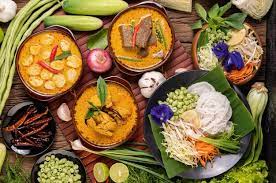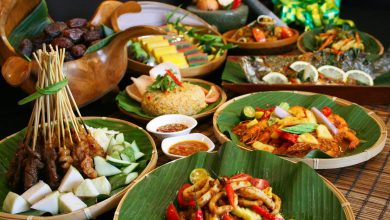A Culinary Odyssey: Exploring the Rich Tapestry of Malaysian Cuisine
Malaysian Cuisine
Introduction:
Malaysian food, which combines elements of Malay, Chinese, Indian, and indigenous customs, is a monument to the nation’s cultural diversity. The rich tapestry of tastes, textures, and fragrances that make up Malaysia’s cuisine is a reflection of the country’s diversified society, geography, and history. This essay takes readers on a culinary tour through the many facets of Malaysian cuisine, examining its essential ingredients, cultural influences, and regional variances.
Historical Influences:
Malaysia’s unique food culture has its roots in the ancient culinary habits of the Malay people, who are the indigenous inhabitants of the nation. Malaysia evolved into a cultural melting pot over the ages as a result of commerce, migration, and colonization. Together with the introduction of European colonial powers, the Chinese, Indian, and Arab people provided a plethora of tastes that have shaped Malaysian cuisine to this day.
Malay Cuisine:
Malay food, which is central to Malaysian cuisine, is distinguished by its flavorful combination of herbs and spices. In Malay meals, rice, the basic grain, is the main course and is frequently served with rich and delicious dishes. Malay rendangs and curries have a unique flavor due to the frequent usage of coconut milk, galangal, lemongrass, and kaffir lime leaves. The national meal, Nasi Lemak, a blend of fragrant coconut rice, anchovies, peanuts, boiled eggs, and sambal (hot chili sauce), is a perfect example of Malay culinary expertise.
Chinese Influence:
Malaysian cuisine has been greatly influenced by Chinese immigration, who brought a wide variety of dishes that are now staples of the local culinary scene. Chinese Malaysian food is incredibly varied, ranging from the well-known Cantonese dim sum and Hokkien noodles to the distinctive tastes of Hakka cuisine. Well-known foods like Hainanese chicken rice and stir-fried flat rice noodles, or Char Kway Teow, have adapted and merged with ease into Malaysian cuisine, demonstrating the flexibility and fusion that characterize the country’s culinary scene.
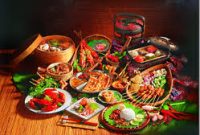
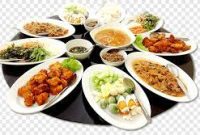
Indian Influence:
Malaysia’s food has been irrevocably influenced by the Indian minority, who brought a wide range of flavorful spices and aromas. Indian Malaysian food, often known as Mamak food, blends regional flavors with classic Indian recipes. Roti Canai is a popular option for breakfast or dinner. It is a crispy and flaky flatbread that is served with either chicken or lentil curries. The variety of Indian Malaysian cuisine is emphasized by the bright and fiery tastes of dishes like Chicken Tandoori and Banana Leaf Rice.
Indigenous Flavors:
Malaysia’s culinary mosaic is enhanced by the distinct tastes contributed by the indigenous populations, such as the Kadazan and Iban in East Malaysia, and the Orang Asli in Malaysia. Traditional cuisines use ingredients such as rare jungle plants, tapioca leaves, and wild ferns, which demonstrate a strong bond with the soil. The Sarawakian meal pansoh showcases the creativity and sustainability of traditional cooking methods by frying meat, usually chicken or fish, in bamboo with indigenous herbs and spices.
Street Food Culture:
Malaysia’s diverse range of cuisines is demonstrated by the country’s lively street food scene. Locally referred to as “pasar malam,” hawker centers and night markets are veritable culinary treasure troves where visitors and residents alike may savor an extensive selection of reasonably priced and mouthwatering cuisine. Savoury street food options such as Char Kway Teow, Satay, Nasi Goreng (fried rice), and Penang Laksa entice the senses and embody Malaysia’s status as a culinary haven.
Regional Variations:
Regional differences in Malaysian cuisine are a result of the country’s diversified population and varied topography. The tastes of the northern states exhibit a love of fresh herbs and a spiciness that is influenced by Thai culinary traditions. Known as the “Food Paradise of Asia,” Penang has a distinct culinary character because to its well-known Char Kway Teow and Penang Laksa. Nasi Ambeng, a communal rice dish, is a favorite in the southern states, whereas East Malaysian cuisine is strongly influenced by seafood, tropical fruits, and native spices.

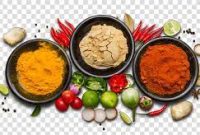
Conclusion:
Malaysian food is an enthralling voyage of taste, with each dish telling a tale of celebration, adaptation, and cultural interchange. The fusion of indigenous, Chinese, Indian, and Malay influences has produced a gastronomic environment that is harmonious and diversified. The love of food in Malaysia unites people from all across the country, from the busy streets of Kuala Lumpur to the quiet villages of East Malaysia. This common appreciation of Malaysia’s rich culinary legacy unites Malaysians. Malaysia is a world-famous culinary destination that tantalizes the taste buds and nourishes the spirit because, despite its continuous evolution, its food continues to be a dynamic reflection of cultural variety.

